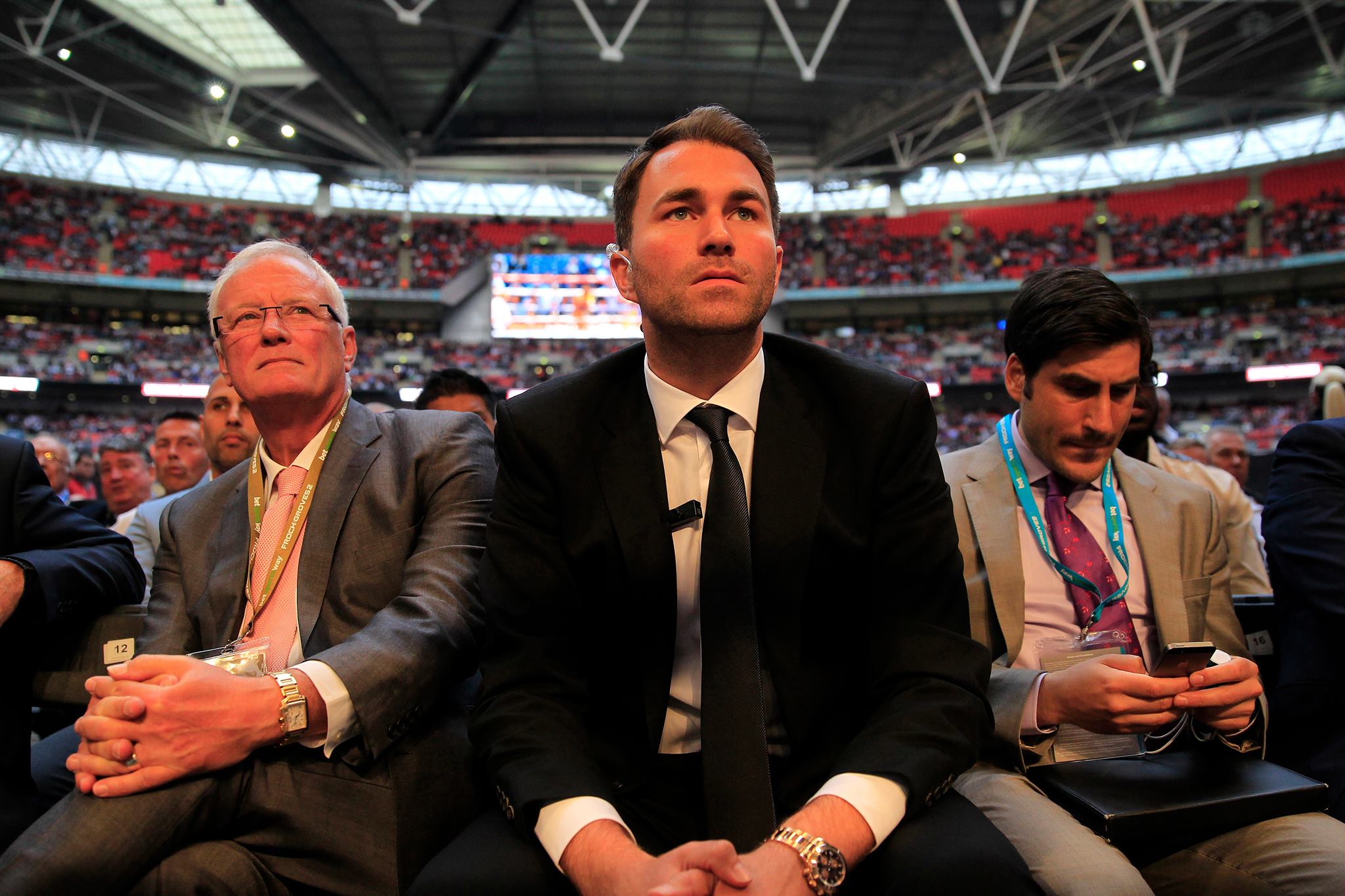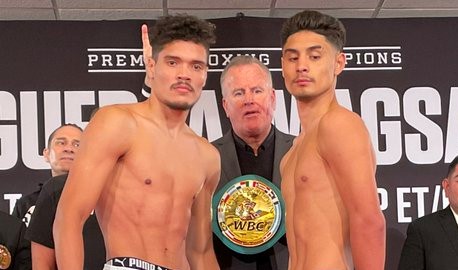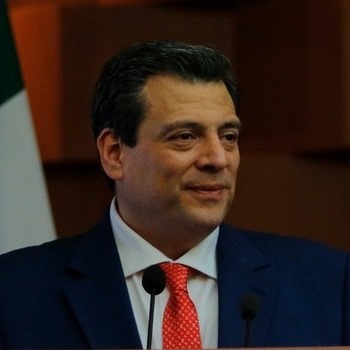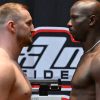Shamrock was bigger and stronger than Gracie, who came in at 176 pounds. He got Gracie to the mat early on, but then he got caught in Gracie’s guard, where Gracie was on his own back, and kicking Shamrock on the back with his heels. This gave Shamrock a cue. He reached back and grabbed Gracie’s ankle, reclining into a heel hook as he looked for the submission. He couldn’t apply it completely because Gracie’s gi was in the way.
According to what Shamrock would say later, he wasn’t aware that a competitor was allowed to use his gi like that, but eventually it was wrapped around his neck. Gracie was applying a choke hold of such effectiveness that Shamrock had to tap out.
Then there was a bit of sportsmanship. Gracie had let go of his hold, because his understanding was that the fight was over. But the referee did not see Shamrock tapping out. He ordered the two fighters to resume. But Shamrock declined, explaining that he had already tapped and that Gracie had won the fight fair and square.
In retrospect, Shamrock may have been overconfident. He felt that with all of his grappling experience, no one could take the measure of him on the ground. Gracie’s technique, while not necessarily convincing him otherwise, nonetheless made him aware that jiu-jitsu was something he had to learn a lot more about. So he went about doing just that. Shamrock’s obsession was to get a rematch with Gracie, and that was going to be at the second UFC event, to take place in March of 1994. In Shamrock’s “Lion’s Den” gym he had his training partners wearing gi’s, and most of the focus was on countering what Gracie was best at.
Of course, there were other aspects of the game he had to work on as well. And so he found himself sparring with people like Vernon White (who later went on to become a standout UFC fighter). In one of those sessions, during a standup, White threw a kick and Shamrock blocked it. The force of the kick, however, broke Shamrock’s hand, and that meant Ken had to wait a little longer before getting Gracie in the octagon, because he had to bow out of UFC II.
For UFC III, promoters hyped a Gracie-Shamrock rematch, but that wasn’t going to happen unless the two fighters advanced in the tournament. As the draw dictated (the UFC went to a random draw starting with its second event), the two could conceivably meet in the finals.
Then one of the more bizarre episodes in the history of the UFC took place. Shamrock did his part, winning his first two matches in the eight-man tourney to earn his way to the finals. Gracie had won his first encounter, and had to win one more to advance to the anticipated showdown. But upon entering the octagon for this semifinal match against Harold Howard, Royce told his brothers that suddenly, he couldn’t see anything. He quit the tournament right then and there, giving Howard a walkover. The crowd then looked forward to Shamrock competing against Howard in the final, but Ken had other plans.
The disappointment of Gracie backing out of the tournament was so great that Shamrock simply couldn’t gather the wherewithal to go out and compete against Howard, after such a tremendous letdown. Royce Gracie had won the first two Ultimate Fighting Championships, and it was a foregone conclusion that he would be there to fight for the title again in the end. But he wasn’t, and therefore it wasn’t worth it for Shamrock to continue. So he didn’t.
Not everyone understood. Bob Shamrock did not understand. Surely there had to be a way for Ken Shamrock to get Royce Gracie into a fight without having to risk the same kind of letdown again.
When Bob Shamrock talked to the UFC people about his adopted son’s future, he suggested that the best way to go about putting together the fight everyone wanted to see was not by rolling the dice and hoping that the two would wind up one different sides of the draw and win their way to the final, but by making it a specially scheduled fight, as it was done in boxing.
So the winner would not be the champion of the UFC; instead, this would be a “Superfight.” And that is just the way it was presented, as the main selling point of UFC V.
The positioning of the fight, though, was kind of unusual on the show. It was to take place before the finals of the tournament, so even though it clearly was the bout with the most marquee value, it still indicated, it would seem, that the crown jewel was the UFC tournament championship match.
That, of course, really was not true. Shamrock’s injury, which precluded him from being in UFC II, and his pullout before the final of UFC III, had only served to build up the anticipation for this fight between the two most significant competitors in the new American sport of mixed martial arts. Gracie, naturally, having been a two-time champion of the event, had a little more cachet attached to his name and his accomplishments, and he also had some of the old “juice” in his corner as well. Shamrock went into the bout with the understanding that there would be no time limit; in other words, that it would be more or less a fight to the finish. And he had trained accordingly. Shamrock’s strategy was to utilize his natural advantages in size and strength to wear Gracie down, not in spectacular fashion but incrementally.
Imagine his disappointment when shortly before the “superfight” was to take place, he was informed that there would be a 30-minute time limit.
Gracie had obvious concerns about his relative lack of size, so he came into the octagon at 190 pounds – roughly fifteen pounds above what had been his normal fighting weight. Shamrock was 205 pounds, which didn’t make him that much bigger.
Very early in the fight, Gracie got Shamrock in his guard, and the two stayed on the ground for about the next half hour.
Action-packed it was not. It was decided on the spot that there would be a five-minute “overtime” in the hope that the fight could come to a conclusion, with the sense of urgency attached. The referee even mandated they get back to a standing position, at which point Shamrock got in a couple of good punches. But then they were back to the ground again, and time ran out. The final result was a somewhat disappointing draw, which elicited a chorus of boos from the audience. They did not get what they wanted.
But in a sense, Shamrock got what HE wanted. Royce Gracie had run roughshod through the first couple of UFC events, which, to a certain degree, were designed with his fighting style in mind, and conceived and run by his family. Rarely had he been challenged. But here had to engage with a worthy competitor, on the ground no less, and he was not able to come out victorious after 35 minutes. Despite the unsatisfying conclusion for the fans, Ken Shamrock had enhanced his stature in MMA, and he used it as a springboard to continue on. Meanwhile, Royce Gracie took it as a ticket out. His family sold its interests in the UFC, and he disappeared from the scene for years.



















Jon Pirovksy
11/28/2013 at 10:12 am
Interesting take on the events of the time!
Just one comment: Royce’s exit after his first fight in UFC3 was not a bizarre event (at least, it was not seen as such at the time). Back then, fighters had to go through at least 3 fights in the same day in order to win the tournament, with no rounds, time limits, protective gloves or any of the modern rules to alleviate things.
In fact, even though he won his fight against Kimo, it was clear he got out of the fight in bad shape. Kimo was huge, much stronger and bigger than Royce, and beat him up ruthlessly during the match. Royce won by submission, but got damaged. He even had to be carried by his brothers after the match.